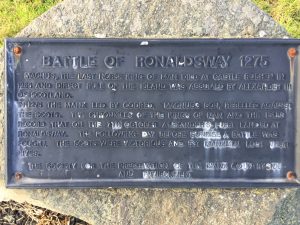 On an impromptu trip to the south of the island yesterday, I found myself reading a memorial stone to the Battle of Ronaldsway, an important event in the history of the Isle of Man which I realised I knew nothing about apart from the fact that it happened.
On an impromptu trip to the south of the island yesterday, I found myself reading a memorial stone to the Battle of Ronaldsway, an important event in the history of the Isle of Man which I realised I knew nothing about apart from the fact that it happened.
As a historical novelist, I spend huge amounts of time on research, and have a wealth of facts about the history of the Peninsular War or sixteenth century Scotland at my fingertips, but recently I’ve been feeling slightly embarrassed at how little I know about the history of the island which has been my home for the past fifteen years. I’ve become conscious of this because, for the first time, I’m researching a novel which is partly set on the island and features a Manx hero.
For the past month I’ve been sitting at home going slightly mad with cabin fever owing to a broken foot. Yesterday, on a brilliantly sunny although slightly cold Sunday afternoon, I decided I’d had enough of it. I’ve reached the point in plotting the new book where I need to start researching seriously and on Friday I paid my first visit to the library at the Manx Museum in Douglas. Yesterday I persuaded my long suffering sixteen year old daughter to abandon her sofa and her book and come with me to investigate Derbyhaven, since my hero, returning to the island after serving in the navy, would have sailed into the harbour there on the weekly packet.
I’ve been to Derbyhaven and Langness before, although oddly enough not as often as I should have been. Adjacent to the airport, it’s an area which really required two sound feet for a proper exploration, but we managed a drive, with frequent stops for photographs and to gaze at the amazing light over the sea. I also managed to almost kill myself trying to walk up to the old chapel on St Michael’s Isle. I didn’t make it as far as Derby Fort, I’ll need to go back when I’m a bit steadier on my feet. But driving along the coast road, admiring the views, I stopped to read the memorial stone and wondered for the first time what on earth the Battle of Ronaldsway was all about.
The Battle of Ronaldsway took place in 1275 and ended in the defeat of the last Norse King of Mann on the area near Castletown.The Vikings arrived in the Isle of Man between AD 800 and 815. Initially they came chiefly for plunder but from 850 onwards they began to settle. The island was under the rule of the Scandinavian Kings of Dublin at first but between 990 and 1079 it was subject to the Earls of Orkney.
Little is known about the conqueror, Godred Crovan. According to the Chronicles of Mann he subdued Dublin, and a great part of Leinster, and kept the Scots under control. In Manx legend he is known as King Orry or King Gorse and he created the Kingdom of Mann and the Isles which included the south-western islands of Scotland until 1164 when two separate kingdoms were formed.
The islands which were under his rule were known as the South Isles, consisting of the Hebrides and all the smaller western islands of Scotland, along with Mann. His successors took the title of King of Mann and the Isles and the capital was on St Patrick’s Isle, current site of Peel Castle.
[slickr-flickr search=”single” photo_id=”5172555690″ type=”slideshow” size=”large”descriptions=”on”]
Godred’s son, Olef maintained a close alliance with the Kings of Ireland and Scotland which kept the Isles safe during his reign. Olef’s son, another Godred, who reigned from 1153 to 1158 also took control of Dublin for a short period but lost the smaller islands off the coast of Argyll as a result of a quarrel with Somerled, the ruler of Argyll.
During the whole of the Scandinavian period, the Isles remained nominally under the suzerainty of the Kings of Norway, but the Norwegians only occasionally made any attempt to assume control. The first such king to assert control over the region was Magnus Barelegs, at the turn of the 12th century and the second was Hakon Hakonarson who came to the Isles in 1263. Norway was suffering from internal dissent and generally left the Isle of Mann alone. After 1217 however there was growing conflict with the Kingdom of Scotland.
In 1261, Alexander III of Scotland sent envoys to Norway to negotiate for the cession of the isles, with no success. He initiated a war, which ended in the indecisive Battle of Largs against the Norwegian fleet in 1263. The Norwegian king Haakon Haakonsson died the following winter, which allowed King Alexander to bring the war to a successful conclusion. Magnus Olafsson, King of Mann and the Isles, who had campaigned on the Norwegian side, had to surrender all the islands over which he had ruled, except Mann, for which he did homage. Two years later Magnus died and in 1266 King Magnus VI of Norway ceded the islands, including Mann, to Scotland in the Treaty of Perth for 4,000 marks and an annuity of 100 marks. The reality of Scotland’s rule over Mann, however, did not become established until 1275 at the Battle of Ronaldsway.
Today, Ronaldsway is best known as the airport of the Isle of Man, and the battle took place on some of the area now covered by the runways in the southern part of the island. The Scottish army crushed the final attempt by the Manx to re-establish the Norse dynasty. The battle resulted in the death of the last Norse King of Mann, Godred Magnusson, and the remainder of the Manx royal family fled to Norway. It led to the firm establishment of Scottish rule on the Isle of Man.
Alexander III dispatched a fleet to the Island led by John de Vesci of Alnwick with a collection of nobles. The Scots landed on St Michael’s Isle on 7 October 1275 and sent a message to the rebels with terms of peace; “offering them the peace of God and of the King of Scotland on condition of their laying aside their absurd presumption, and of giving themselves up to the King and his nobles.”
Godred and his Manxmen rejected the terms and battle was joined before sunrise on the following day, 8 October. The Manxmen were routed and suffered heavy casualties, which probably included Godred, thus ending the male line of the Manx Norse dynasty. One theory suggested that Godred survived and fled to Wales, but there seems no evidence of this.
With the death of Godred, the Isle of Man came under Scottish rule. This lasted at least until the death of Alexander III in 1285, as it was listed among Alexander’s heir Margaret, Maid of Norway’s future possessions in 1284. The Island did not, however, remain in Scottish hands beyond September 1290, when Edward I of England issued decrees to the Manxmen as their ruler. Thereafter England and Scotland struggled for control of the island until 1333, when Edward III of England renounced all English claims over the Isle of Man and recognised William Montacute, 1st Earl of Salisbury as King of Mann. English rule was reinstituted in 1399, the title of King of Mann changed to Lord of Mann in 1504, and from 1765 the title was purchased by the Crown of Great Britain.
In 1936 an eastwards expansion of Ronaldsway Aerodrome dug through a number of small rises near the airfield to provide soil for the levelling of the ground to the east. When workers began digging into one rise on the south side of the airfield they came upon numerous ancient graves. To the north east of the main area of graves a large number of skeletons were found thrown together in a disorderly manner. It was believed the collection of skeletons might be a mass grave of soldiers who fell at the Battle of Ronaldsway.
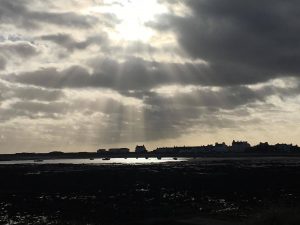
The Battle of Ronaldsway has nothing at all to do with my nineteenth century Manx hero. Reading about it yesterday while resting my poor sore foot after such a great afternoon out, though, reminded me why days like that are often so successful. I will probably never write a novel based around the Battle of Ronaldsway. But I do know more now, about the distant past of the island, and when I can find the right book I’d like to learn more about the Vikings of Mann. I’ve already decided that I’m due another visit to the amazing House of Mannanan museum in Peel, a place I’ve not visited since my kids were young. Sometimes it’s very easy to get swept up in the big stories of history and to forget the lesser known but often fascinating events which took place right on our doorstep.
For regular updates on this site including history, travel, book reviews and plenty of labradors (and a few freebies thrown in) please join the e-mail list here.

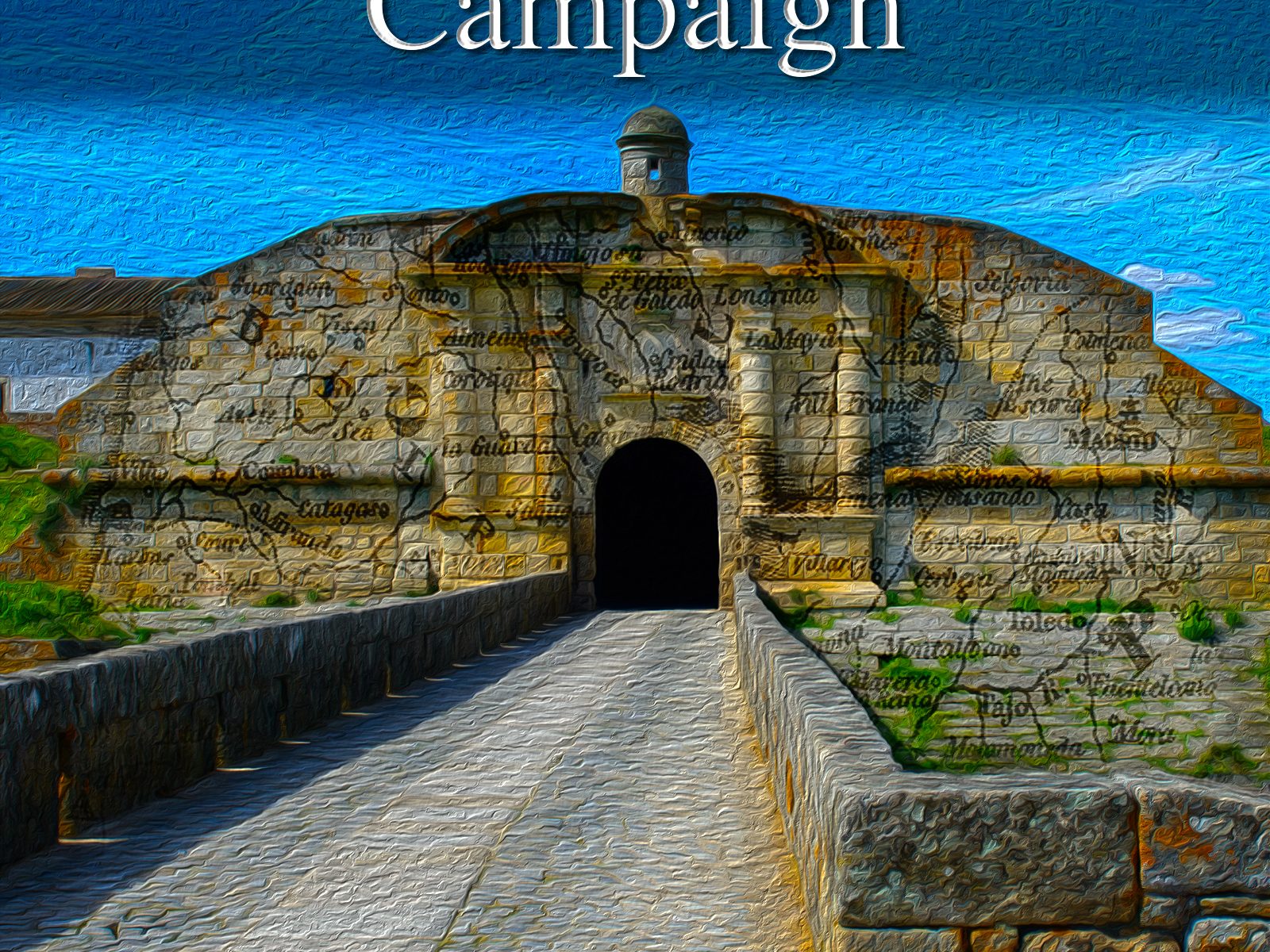

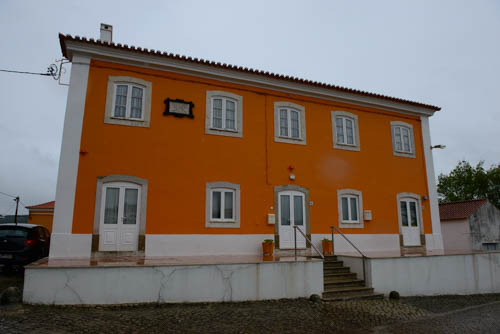
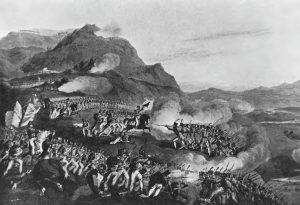
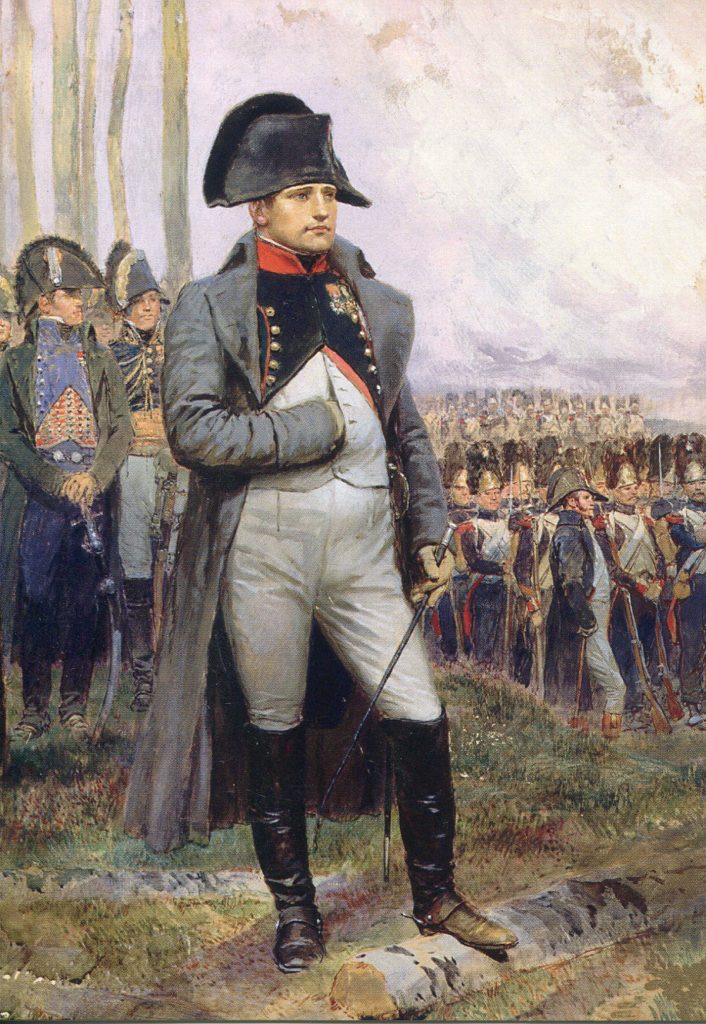
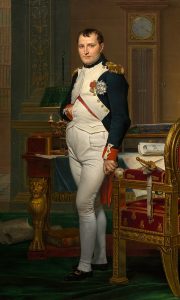 and Napoleonic Wars
and Napoleonic Wars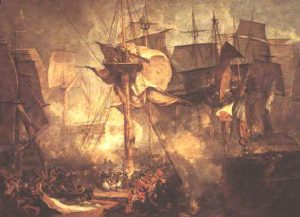 invasion of Britain in the coming year and planned to use the Spanish fleet in the campaign. In 1805, a combined Franco-Spanish fleet, attempting to join forces with the French northern fleets ready for the invasion was attacked by a British fleet and lost in the decisive
invasion of Britain in the coming year and planned to use the Spanish fleet in the campaign. In 1805, a combined Franco-Spanish fleet, attempting to join forces with the French northern fleets ready for the invasion was attacked by a British fleet and lost in the decisive  The breakdown of the alliance between France and Spain, and France’s invasion of Portugal was the opportunity for Britain to mount a land offensive in Europe. The army which landed in Portugal in 1808 was not large and very little was expected of it, but the significant victories at Rolica and Vimeiro under
The breakdown of the alliance between France and Spain, and France’s invasion of Portugal was the opportunity for Britain to mount a land offensive in Europe. The army which landed in Portugal in 1808 was not large and very little was expected of it, but the significant victories at Rolica and Vimeiro under